How To Provide First Aid To A Major Wound
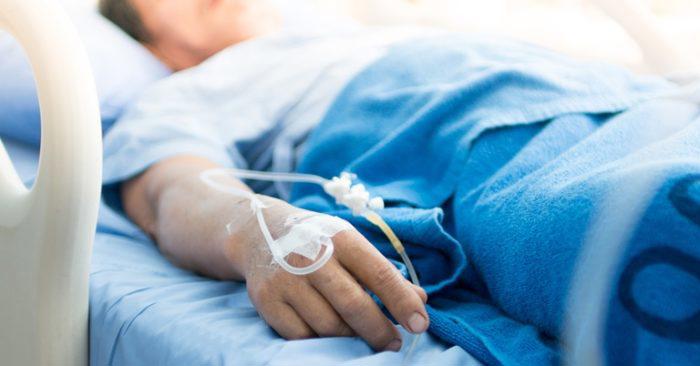
Major wounds can happen in a moment, in any kind of environment. When we think of a major wound, we typically envision a catastrophic event such as a serious road collision, an explosion or a violent confrontation — but major wounds (such as embedded objects, puncture wounds, amputation, or bleeding from the scalp) can occur anywhere from the workplace, to the home, right through to a family day out hiking. And they can be caused by the most harmless events. such as trips and falls.
Also see: How to Provide Effective First Aid to an Open Wound
Major Wound First Aid
Management of an Embedded Object
If a casualty suffers an accident or injury that results in an embedded object remaining penetrated in the skin, follow these steps:
- Use gauze and apply pressure surrounding the protruding object to control bleeding
- Position padding around the object to prevent the object from twisting or moving; bandage over and around the padding to secure the foreign object
- If the object is quite long, ensure the bandaging around the object has been positioned it securely
- Seek medical assistance, if the injury is severe or if you are unable to safely move the casualty; call triple zero (000)
If providing First Aid to an embedded object, remember:
- DO NOT remove the embedded object as it may be preventing significant blood loss. The removal of the object could also cause major structural and nerve damage; it must always be removed by a professional
- DO NOT put any pressure on the object
- DO NOT cut the end of the object unless it is completely unmanageable and prevents you or medical professionals from moving the casualty

Management of Puncture Wounds
Puncture wounds range from the penetration of a bullet, knife, scissors, stick or even poles. If a casualty has suffered a puncture wound, follow these steps:
- Remove any clothing covering the wound
- Keep the wound as clean as possible; if possible, do not use dirty clothing or materials
- If the wound is not bleeding, clean around it
- If the wound is bleeding, apply gauze around the wound and apply pressure to control bleeding
- DO NOT try to remove any foreign materials found in the wound
- Check if there is an exit wound on the opposite side of the puncture
- Apply a sterile dressing
- Ensure the casualty is seated in a comfortable position
- Seek medical assistance; call triple zero (000) if blood loss is severe
Management of Blast Injuries
Blast injuries are something many of us don’t often think about, but they can occur anywhere. Some workplaces may have explosives or dangerous chemicals onsite; homes may have a faulty gas heater; or there is the risk of a terrorist attack when in public spaces. All of these events have the potential to result in a blast injury. For the best management of blast injuries, follow these steps:
- Follow DRSABCD
- Call triple zero (000)
- Position the casualty in a position most comfortable to them and ensure they have no difficulty breathing
- Control bleeding with gauze and apply pressure
- Care for wounds and burns
- Immobilise any fractures
- Monitor breathing and record any changes in condition to report to medical professionals when they arrive
Management of Amputated Parts
An amputated body part refers to a body part that is either completely or partly severed from the body. When applying First Aid for amputated parts, follow these steps:
For the casualty:
- Follow DRSABCD
- Call triple zero (000)
- Control bleeding with the application of gauze, pressure, and raising the limb
- Apply a sterile dressing and bandage the wound securely
For the amputated body part:
- DO NOT wash the amputated body part
- DO NOT put the amputated body part in water or any sort of liquid
- Wrap the amputated body part in gauze and place in a watertight container or plastic sealed bag
- Position the watertight container or plastic sealed bag in cold iced water. DO NOT let the amputated body part come in contact with the ice or water
- Ensure the amputated body part goes to hospital with the casualty
Management of Bleeding from the Scalp
- Follow DRSABCD
- If you believe the skull may be fractured, apply gauze and pressure around the wound
- If you cannot see evidence of a fracture, control bleeding with intense pressure directly to the wound (if available, wear gloves and use a pad)
- If the bleeding does not subside, sit the casualty upright
- Monitor the casualty’s condition (bleeding, speech, skin colour, nauseousness)
When someone suffers a major wound, it can be a highly stressful and overwhelming event for both the casualty and the person providing First Aid. If a person has suffered a puncture wound, blast injury, amputation or has an object embedded in their body, the fundamental principle is to remain calm, reassure the casualty, and minimise bleeding until medical assistance arrives.
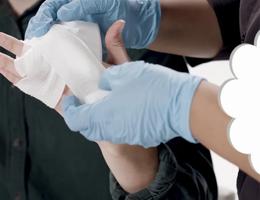
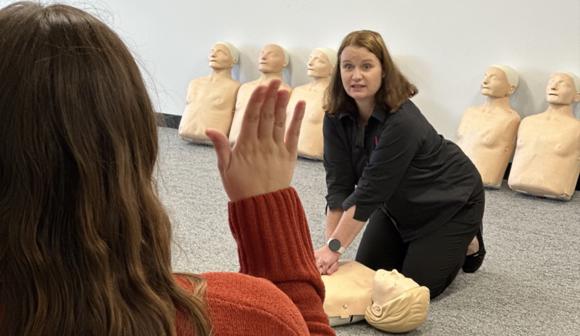
HLTAID011 PROVIDE FIRST AID
Suitable for both people in workplaces and members of the public who would like a comprehensive first aid course.
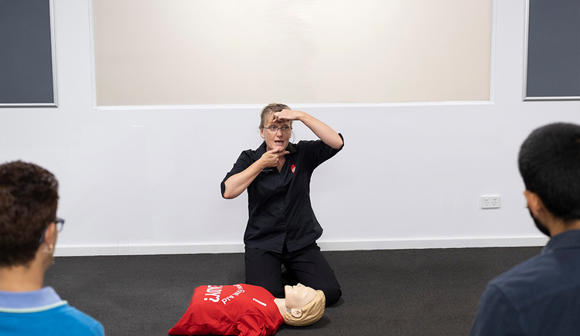
HLTAID009 PROVIDE CARDIOPULMONARY RESUSCITATION
Learn the skills to perform life-saving (CPR) on an adult, child or infant who is unconscious and not breathing normally.
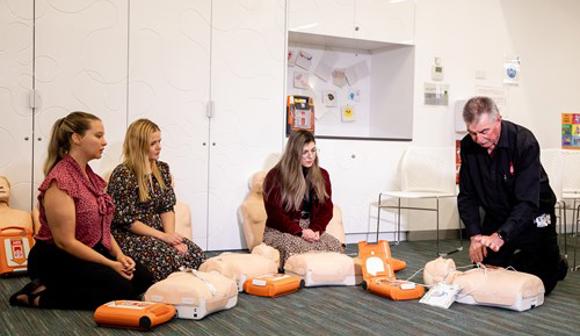
VENUES & LOCATIONS
St John has a range of training locations across Victoria.
